Introduction
It’s a pleasure to welcome you to the RUSI Seapower Conference.
In the UK, a very large part of the centre of gravity of our defence and security is steadily moving toward the maritime.
After a decade of enduring land operations, we are recapitalising our maritime capabilities, brought on by fresh thinking that I think will shape many of our wider defence and security options in the years ahead.
Some of us have used the rather challenging expression of the “maritime century” and I think it wont be for us to judge whether that’s true, it will take some years, maybe decades, to discover the truth of such a comment.
But what is true is things are changing.
So you, our partners and friends from around the world, many personal friends of mine, are very welcome to be part of this process and we look forward, as ever, to working with you.
Now we might be meeting in a corner of north west Europe. Yet the trends we consider daily are global; far beyond the remit of one government or one country; they span entire oceans and continents and are rooted in many centuries of connected history.
So, just as navies pool their ships and aircraft in response to contemporary challenges, so we must also pool our ideas in order to share our future maritime journey.
And whether here today we represent navies large or small, we all recognise maritime power is more than just a tool of defence and security; it is more than a contribution to the Joint; it actually practicalises our presence, our sovereignty, and our national ambition beyond territorial boundaries, in a world that is increasingly cross connected by the sea through trade and technology, culture and conflict.
Navies, by their nature, are strategic in effect. And when governments invest in maritime forces, as they certainly are in the UK, it is a deliberate and substantial commitment, placing demands on people and skills, and industrial capacity and performance, at home and abroad, on partnership and on economics. These demands also warrant considerable investment in their own right, because they can open wide opportunity as a spur for prosperity and growth and a focus for science and technological innovation, and much of that I’ll be discussing at DSEI tomorrow. So there are strategic consequences, and opportunities, for navies too, as well strategic responsibilities.
Certainly in the UK there is a growing recognition of how the Royal Navy can play across all arms of government, be it for hard or soft power; for physical security or economic security. Indeed I sense an increasing understanding that investment in the Royal Navy itself can play into the whole of the UK prosperity agenda, underlined by the instinct of government, reflected in the Chancellor’s repeated statement that he aims “to build the most modern navy in the world”.
So while I do not intend to rehearse every twist and turn of the Royal Navy’s journey over the past couple of years, I do intend to talk about our future, because I believe this has relevance amongst our friends here today far beyond the UK shores.
And while we have much to learn from our international partners, I am conscious that the Royal Navy has the privilege of international leadership roles with NATO, with the EU Naval Force Somalia and Combined Maritime Forces in the Gulf, and indeed for very many of you through the international reach of Flag Officer Sea Training and his people. Very many of you have generously contracted your futures, through us, into the Flag Officer Sea Training organisation and we’re deeply respectful of that priviledge.
So like-minded navies around the world must work together to extend their presence and capability, and supprt the rule of law, but there is a special responsibility placed on the Royal Navy to set an example and to contribute to the frameworks which can bring us together, and we feel that acutely as a service.
Global Context
From the UK’s perspective, our security is currently viewed through the simultaneous threats from franchised ideologies such as ISIL, as well as sophisticated threats from states such as Russia.
We do not know how these threats will evolve over the coming years, or what new ones might emerge. But, looking back over the past few years, the Royal Navy has launched maritime strikes against Libya, tracked submarines in the Atlantic, removed chemical weapons from Syria, rescued migrants in the Mediterranean, responded to pandemics in West Africa, and we have searched for missing aircraft in the Southern Indian Ocean. I have chosen this specific list, because unlike our standing tasks, none of it was predicted; and all of these tasks were performed at short notice. That’s the nature of the maritime domain.
And set against this sort of continuing requirement, the Royal Navy does I think offer agility and efficiency to UK defence, because of the nature of the efficiencies we have pursued to support maritime power effectively.
We can go where we want, as soon as we want. We don’t need to ask anyone’s permission, or rely on host nation or external support, because we take everything we need with us. And we use the sea to our advantage, to distance ourselves from some of the complications that come from being fixed ashore, particularly in the concept of protection ashore.
At the same time, the government wants to grow its national economic authority, by accessing new markets and pursuing technological advantage.
The Royal Navy fits neatly into that glove. Like the other services, the Royal Navy has its areas of concentration, like the North Atlantic and the Gulf, but we maintain a selective global presence, from the Caribbean to the Antarctic.
We can be anywhere, but very truthfully, not everywhere at the same time. But wherever we are, whatever we are doing, we are demonstrating UK intent and the world is watching our performance. Take the destroyer HMS Daring’s deployment to Asia-Pacific. She was doing everything from ballistic missile trials with the US in Hawaii to delivering aid to the typhoon-ravaged Philippines. Hard and soft power globally, both together, that’s what we tend to do best.
And soon the Royal Navy will be able to draw upon a new UK naval base in Bahrain which will create a Middle East hub, giving us hub and spoke option for deployers, bringing the Indian Ocean and Pacific, with its rising maritime economics and importance, within easy reach in support of UK and multi-national objectives.
The Future
So while we are not complacent about the outcome of the ongoing SDSR, and much remains to be decided formally, the Royal Navy expects to contribute to global security and stability, independently and in coalition, to advance our national and collective responsibilities and our prosperity.
We will do so through two key strategic outputs; through deterrence and through power projection. Both of those reflect our Nation’s status and ambition.
The Royal Navy has proudly delivered the continuous at sea deterrent for the past 47 years. Government will achieve the 50th anniversary of this unbroken undertaking in June 2019, within the life of this Parliament and, through successor, we will continue to do so for many decades ahead.
But the navy is also now developing the ability to project really meaningful force through a continuous carrier capability in a form that not only delivers from sea the most capable fifth-generation strike fighter in the world, that not only combines with our amphibious ships, our aviation and our marines to give credible and continuous amphibious readiness, but also offers so much more potential as a secure platform for future unmanned capabilities, counter-terrorism and intervention options.
We will bring these capabilities together into what is characteristically known as the Maritime Task Group, but it is so much more. It will provide strategic assurance and reassurance, and the means for all three services to project power and to mount sustained operations anywhere we choose, on our own through the Joint Expeditionary Force, or through a NATO framework or in a more ad-hoc coalition.
So our sister services and joint organisations within UK defence are very much part of this journey. We will draw, indeed we must draw, on their support to deliver the Maritime Task Group in a way that it is credible and resilient, but it also has the potential to unlock new solutions for them.
It is easy to see how, for instance, the Maritime Task Group could play a fundamental role to enable theatre access for special forces and the army as part of any larger joint response, supported by appropriate shipping. And as I will outline at DSEI tomorrow, the ability to unlock the connectivity in data transfer is a key and often unseen element of the capability growth that is necessary to achieve maximum advantage of such a construct.
We will draw on our international partners too. The Task Group is international by design because it will incorporate ships and aircraft from partner nations, just as we send our ships to join French and American carrier groups in the Gulf today.
Last month, the US Marine Corps declared an F35B initial operating capability. We will draw continuously on the generous partner support of the US Navy and the French who are making great progress helping us preparing to introduce the F35B into Royal Navy and RAF service. But, as for operating the jet, the US Marine Corps will show us much of the way.
Of course, there are a few more pieces of the Maritime Task Group jigsaw to put in place, including Fleet Solid Support shipping and the future of Maritime Intra Theatre Lift. We will also work with Joint Forces Command to get the enablers of command and control, and cyber and medical, exactly right.
But these are really significant opportunities that did not exist when I stood here 2 years ago. Then, our aspirational view as we looked forward to what might be at the back end of a focus on Afghanistan and the opportunity of a defence review, would never have been quite so characterized as they are by my words today.
And the next most important and outstanding component for our future is the Type 26 frigate. This is the lynchpin that holds together the continued success of the nuclear deterrent, the future success of the Maritime Task Group, and the Royal Navy’s contribution to joint operations. Our current Type 23 frigates are recognised globally as one of the quietest and most effective submarine hunters ever brought into service. But they are ageing and if we are to maintain this level of capability, against the backdrop of a global proliferation of nuclear and conventional submarines, then the Type 26 is crucial.
Maritime security
As well as these instruments of global, expeditionary power, the Royal Navy will continue to deliver its maritime security responsibilities.
Sometimes it is the nature of conferences that conversations tend to focus on the big stuff. Domestically, the signing of the UK’s first ever National Strategy for Maritime Security in 2014 and the creation of the Portsmouth-based National Maritime Information Centre represent really important steps on a genuinely cross-Government approach to Maritime Security. Already this year the Royal Navy has supported the Border Force and UK National Crime Agency in five operations, including the largest drugs haul in UK waters ever.
We can and must do more. After a successful trial earlier this year, we are already working closely with the Department for Transport and Home Office, to create a more effective operating model of joint employment of our older Offshore Patrol Vessels with the Border Force cutters, with combined law enforcement detachments embarked. This is really important, because across government it shows we’re not just willing but enthusiastic about the connectedness required to deliver a more agile response in UK waters.
But in this globalised world, the defence of our homeland begins at range, and we are confident that most, if not all, of the Royal Navy’s capabilities are powerful contributors to the counter-terrorism fight.
Much of this can’t be discussed here. Be reassured, we’re extremely focused on today’s world and today’s threats.
I would add as a footnote, the Royal Marines already provide 42% of our badged Special Forces personnel, despite representing only 4.5% of military manpower, and all our ships, represent mobile, flexible sovereign bases from which we can project capabilities from all manner of agencies and specialist forces.
Nor should we forget the Royal Navy’s built in ISTAR capabilities, including our submarines, which wait patiently, observing pirates, people smugglers or terrorists ashore with virtual impunity. They collect and process continuous streams of data across the electromagnetic spectrum, day after day, watching and waiting.
We don’t normally talk about these things, but in the counter terrorism fight they are important contributions to our capability.
Efficiencies and responsibilities
Beyond our focus on current operations, we must understand and reflect on the changing nature of threats we face in the subsurface, surface, air, land and cyber components of the maritime domain; we then have to grow our capability to match or, better, outstrip these challenges; and we have to resource this in leadership, in imagination and creativity, money and people. That will not be easy. I think that’s one of the conversations for today. How do we get our people to think differently, to be more ambitious and agile, and to lose the complacency of the isolated maritime domain?
We in the UK have an enviable track record of efficiency, from force generation to harmony, and we will continue down this path, because we know it is always possible to use our resources better and find more effective ways of working and what that allows us to do, in the economic construct that has been delegated to me, is particularly in the years ahead to spend our money much more as we would want.
The creation of centres of excellence in our 3 naval bases has been held up within defence as a model of efficiency for others to follow. This has included the co-location of specialist units and the release of vacant land back on to the market for commercial or community use.
And as I said before, we now have the delegated authority, and a budget, and these savings can be ploughed back into the frontline. So the incentive is there, we have our own economic war to fight, and I can assure you the Royal Navy will not let this opportunity pass us by.
But manpower will remain a critical challenge, not just for the navy, but for defence, in the years ahead.
The demographics are against us and as our traditional source of recruits gradually contracts, we must increase our efforts to recruit from the widest possible pool of talent available.
And there’s the conundrum. While we are leaders in technology and innovation, we are also demanding of our people, and the leadership required to make people stay in the service is key.
Prosperity and innovation
Within this manpower challenge is a fantastic opportunity to work with industry to our mutual benefit; to bring forward the engineering skills our country needs for defence and prosperity.
That’s why the Royal Navy is working really hard with industry to exploit science, technology, and engineering in order to promote UK prosperity.
And there are elements of this which are invisible to most of you. We are particularly proud to be the only Service to sponsor 5 University Technical Colleges, with several more in the pipeline, creating an annual flow of over 1200 additional technically qualified youngsters into our catchment areas.
Why would we do that?
We do that because we expect investment in technology and the excitement of innovation to be a national responsibility beyond just that of the Royal Navy.
We certainly don’t expect every student who passes through them to join the Navy, that would be unrealistic, but we do want to play our part to inspire and guide them toward a career in technology and engineering. The Government is promoting a prosperity agenda. We need to feed a strong and important and I hope growing industrial base, with the backing of research and academia, to do so.
It is difficult to quantify, but two recent reports from CEBR and Kings College London suggest strongly, but not definitively because more data is required, that for every £1 spent on defence you get £2 back.
High-end war-fighting demands timely research and development, industrial investment and the nurturing of considered technologies. As we face the proliferation of cyber skills, never mind the expanding market in cheap ballistic missiles and mines, we cannot ramp up R&D and an industrial response at very short notice, it just doesn’t work like that, because the skills and capacity don’t exist. We do have to invest now and seriously.
So, as I will outline tomorrow at DSEI tomorrow, while other navies pursue mass, and I can understand why that is the case, we are looking also to new ideas and technology to cut costs and reduce manpower demands, and to increase capability to retain a decisive advantage over more conventional opponents.
Maritime autonomous systems will steadily offer a range of lean manned, low risk, persistent solutions beyond ISTAR and into anti-submarine warfare, mine countermeasures, command and control mechanisms and hydrography.
Elsewhere in our complex portfolio ahead, directed-energy weapons and rail guns are being pursued with vigor, and offer the route to address the spiraling costs of missile development and production, as well as reducing supply chain demands.
This is science fact, already in development using British expertise. Indeed, the Type 26 design is not entirely what it appears to be. It is not a simple ship. It is not a like-for-like replacement. It is centered on space, weight, power and cooling options, so it can flex to absorb new ideas, and has the right substance and support to encourage those ideas over the next 30 years.
So, both as a supplier of expertise, and as a customer of the products this expertise produces, the Royal Navy aspires to be at the heart of the UK’s technology led-recovery. Just you watch us.
Conclusion
Let me conclude by saying the government has set clear direction in our maritime investment. If you take the basic building blocks, it appears to be relatively straight forward, but within that journey is quite a challenge. That has set a challenge for more than just the Navy, it has set a challenge for Defence.
The sovereign and strategic delivery responsibilities of a replacement continuous at sea nuclear deterrence and a new continuous carrier strike capability will, together, determine our standing as a front rank military power, and a nation.
It is not about the navy. It is about defence. It is about joined-up and connected capabilities. It is about willingness to work together.
And the delivery of these projects, 2 largest and most strategic programmes in the last 50 years, is a huge collective responsibility for the whole of UK defence, and for industry, and for research and development, and we will continue to draw upon the generous support of some of our international partners too.
But, my friends, amongst all those capabilities and all that aspiration, a very substantial part which is properly vested in considered technical and economic thought will get a Royal Navy that offers flexibility, global reach, worldwide influence, giving political choice and military options, power at sea, and perhaps more importantly power from the sea, working with all 3 services, working across government, working with industry, working to meet our international commitments, our legal responsibilities, but most of all working with friends and we really look forward to that.










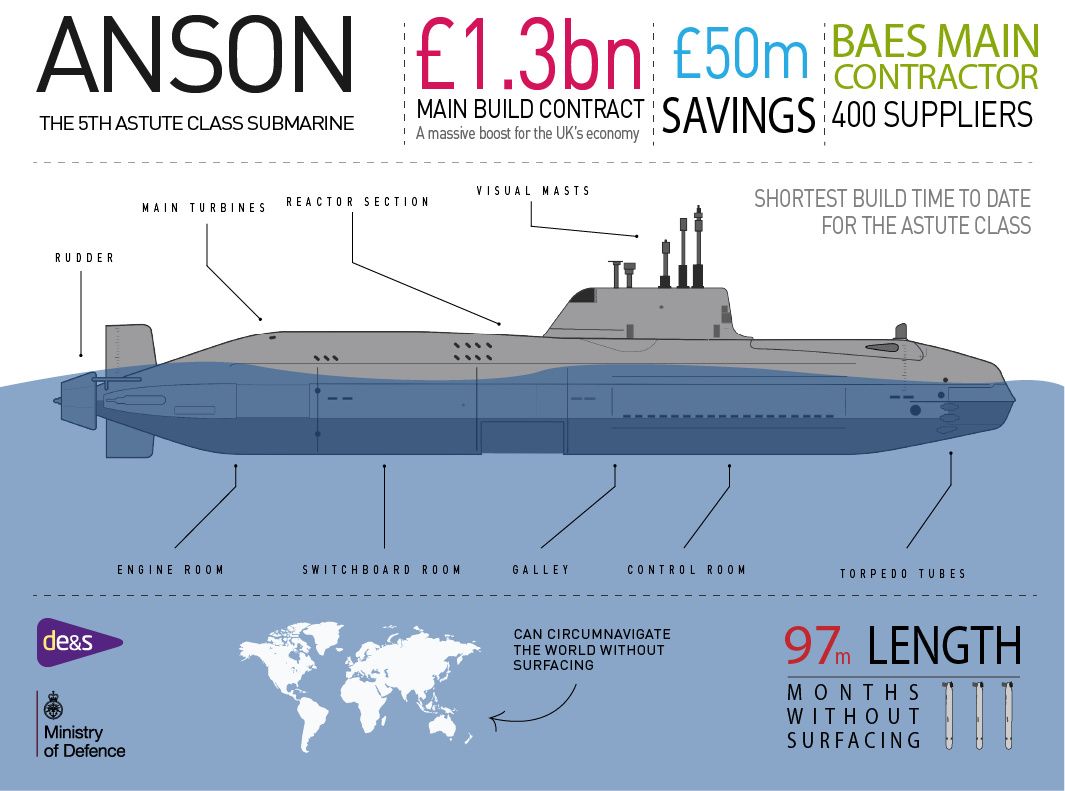

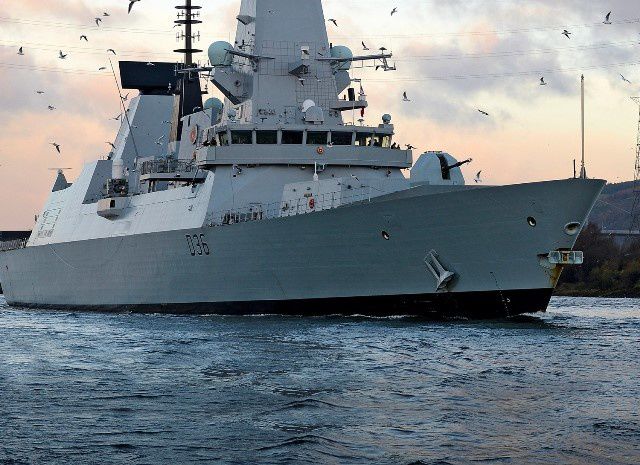


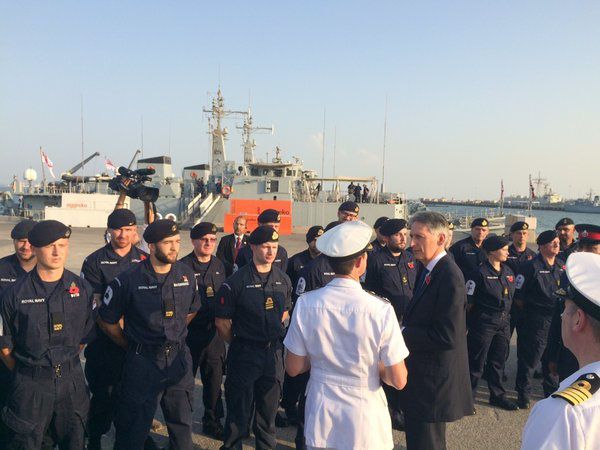










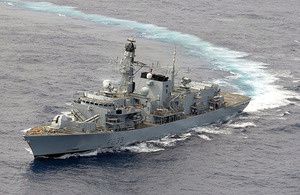
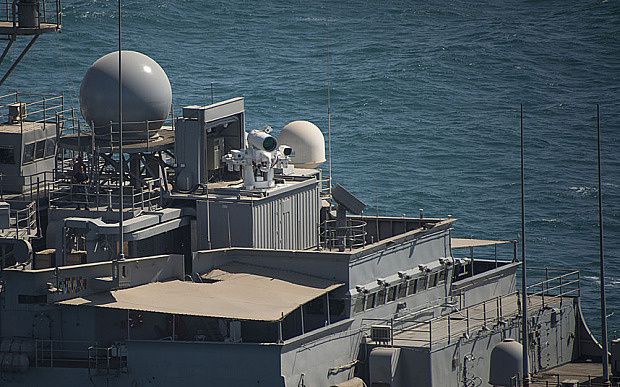
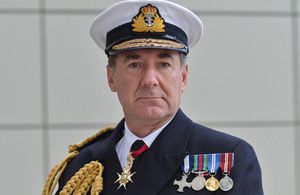


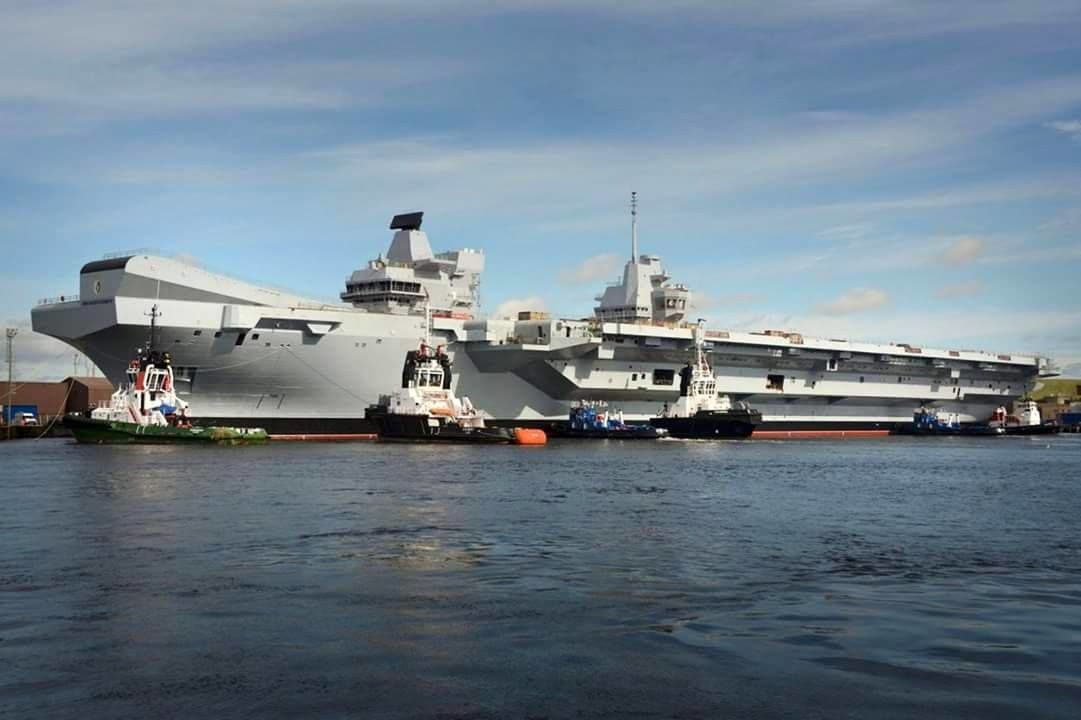




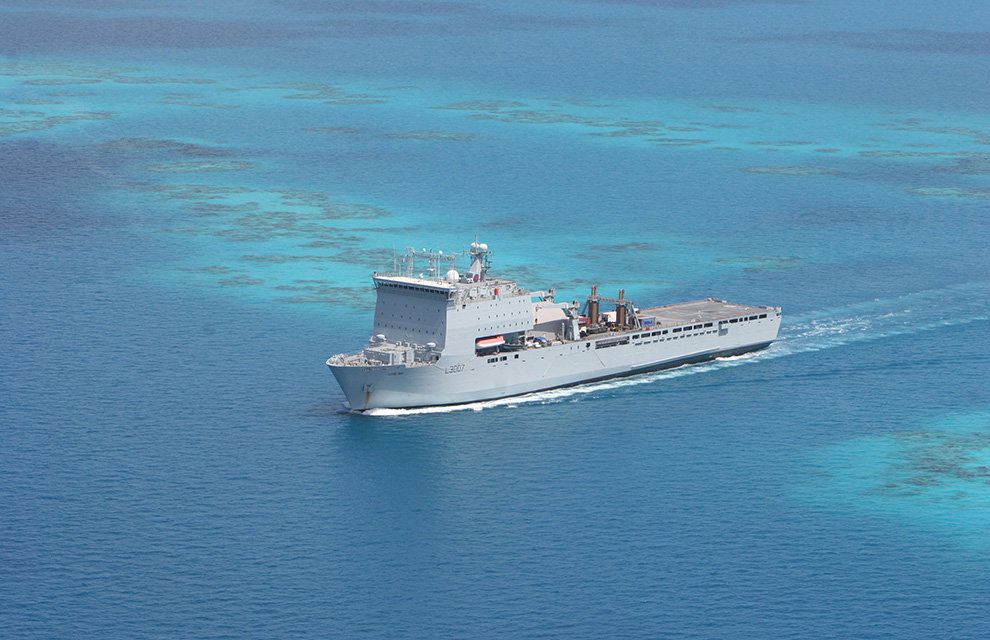
/image%2F0547456%2F20150826%2Fob_ea4188_2015mfdf036-001-042-nxpowerlite.jpg)
/image%2F0547456%2F20150826%2Fob_7c6780_2015mfdf036-001-077-nxpowerlite.jpg)
